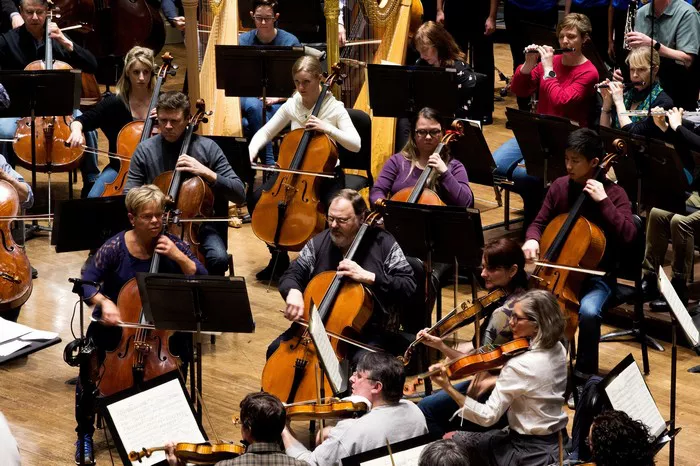Sonata form is a fundamental musical structure used widely during the Classical period, primarily by composers like Haydn, Mozart, and Beethoven. This form serves as the backbone of many classical compositions, particularly in symphonies, sonatas, and chamber music. Characterized by its three main sections—exposition, development, and recapitulation—sonata form creates a cohesive and dynamic musical narrative. The exposition introduces the primary themes, the development explores and manipulates these themes, and the recapitulation returns to the original themes, often with subtle variations.
I. The Origins of Sonata Form
Sonata form developed during the Classical period. This was in the mid-18th century. Composers like Haydn, Mozart, and Beethoven used it extensively. They helped define and refine the form. Before sonata form, the Baroque period used different structures. These included the fugue and the suite.
II. Basic Structure of Sonata Form
Sonata form has three main sections. These are the exposition, development, and recapitulation. Each section has its own purpose and characteristics. Let’s explore each section in detail.
1. Exposition
The exposition introduces the main themes. There are usually two themes, called the first and second themes. These themes are in different keys.
First Theme: This theme is in the home key, also called the tonic. It sets the tone for the piece. It is usually bold and memorable.
Bridge or Transition: This section connects the first theme to the second theme. It modulates, or changes key, to prepare for the second theme.
Second Theme: This theme is in a different key, often the dominant or relative major/minor. It contrasts with the first theme. It is usually more lyrical and gentle.
Closing Section: This reinforces the new key. It often repeats elements from the second theme.
2. Development
The development section is where the composer explores and manipulates the themes. This section is more complex and varied.
Theme Variation: Themes from the exposition are altered. This can involve changing the key, rhythm, or dynamics.
Modulation: The music moves through different keys. This creates tension and interest.
Fragmentation: Themes are broken into smaller parts. These parts are developed independently.
Re-transition: This leads back to the home key. It prepares the listener for the recapitulation.
3. Recapitulation
The recapitulation brings back the themes from the exposition. However, there are some important differences.
First Theme: This theme returns in the home key. It is usually the same as in the exposition.
Bridge or Transition: This section is altered to stay in the home key. It no longer modulates to a different key.
Second Theme: This theme returns, but now in the home key. This creates unity and resolution.
Closing Section: This reinforces the home key. It often leads to a coda.
4. Coda
The coda is an optional section. It brings the piece to a close. It often restates themes from the exposition and development. It reinforces the home key and provides a final resolution.
III. Examples of Sonata Form
Many famous pieces use sonata form. Here are a few examples:
Mozart’s Symphony No. 40 in G Minor: The first movement is a classic example. It follows the sonata form closely.
Beethoven’s Piano Sonata No. 8, “Pathétique”: The first movement is another example. It shows Beethoven’s use of dramatic contrasts and development.
Haydn’s Symphony No. 104, “London”: The first movement is in sonata form. Haydn’s use of humor and surprise is evident.
IV. Variations and Extensions
While the basic structure is consistent, composers often made variations. These variations add complexity and interest.
Sonata-Allegro Form: This is a more specific term for sonata form used in fast movements.
Sonata-Rondo Form: This combines elements of sonata form and rondo form. It has a recurring theme, like a rondo, but also has development and recapitulation.
Double-Exposition Sonata Form: This is used in concertos. There are two expositions, one for the orchestra and one for the soloist.
V. Tips for Listening to Sonata Form
To appreciate sonata form, active listening is important. Here are some tips:
Identify Themes: Listen for the main themes in the exposition. Note their characteristics and keys.
Follow the Development: Pay attention to how the themes are varied and developed. Notice the key changes and modulations.
Recognize the Recapitulation: Listen for the return of the main themes. Notice how they are presented in the home key.
Appreciate the Coda: The coda often provides a satisfying conclusion. Listen for restatements of themes and final resolutions.
VI. The Emotional Impact of Sonata Form
Sonata form is not just a technical structure. It has a profound emotional impact. The contrast between themes, the tension of development, and the resolution of recapitulation create a powerful musical journey.
1. Creating Balance and Drama
The balance between different sections creates a sense of order. The contrast between the first and second themes adds drama. The development section creates tension and anticipation. The recapitulation provides resolution and closure.
2. Engaging the Listener
Sonata form engages the listener. The repetition of themes makes the music memorable. The variations in the development section keep it interesting. The return of the main themes in the recapitulation is satisfying.
See Also: Classical Music for Kids: A Deep Dive into Timeless Melodies
VII. Conclusion
Sonata form is a cornerstone of classical music. It combines structure with creativity. It has evolved over time, from the Classical period to the modern era. Understanding sonata form enhances our appreciation of classical music. It reveals the balance of order and creativity that defines this genre. By actively listening and analyzing sonata form, we can deepen our connection to this timeless music.

